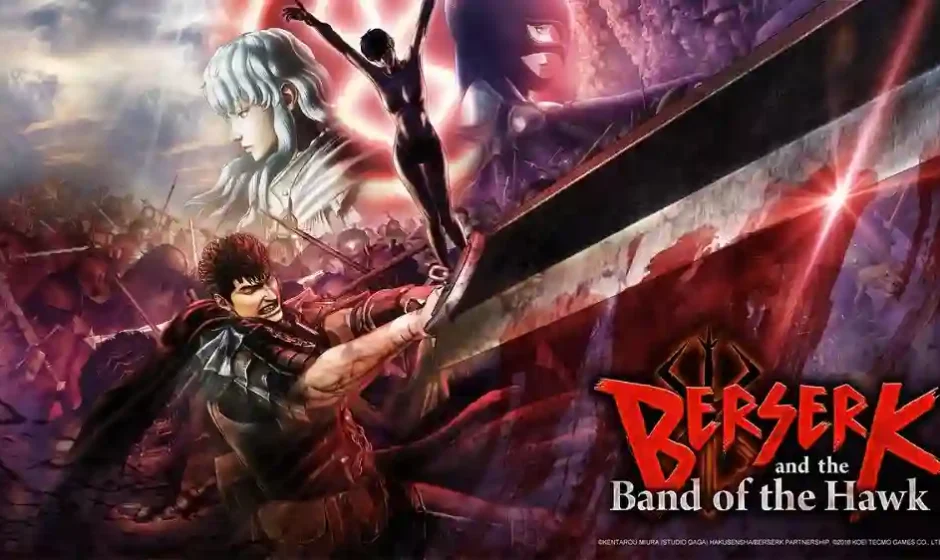Kentaro Miura’s magnum opus, “Berserk,” stands as a testament to the art of worldbuilding, creating a universe that is as intricate as it is brutal. This article delves into the meticulous craftsmanship behind Berserk’s world, exploring how Miura constructs a narrative landscape steeped in darkness, despair, and a chilling sense of realism.
Midland: A Realm Shattered by Conflict
Central to Berserk’s world is the war-torn kingdom of Midland, a realm embroiled in a ceaseless struggle for power. Drawing inspiration from historical periods such as Japan’s Sengoku era and European medieval times, Miura crafts a setting that feels both familiar and exotic. The political intrigue, the feudal structure, and the clash of armies create a tapestry of conflict that sets the stage for the series’ relentless narrative.
Midland becomes a canvas upon which the characters’ destinies unfold. The scars of battle, the crumbling castles, and the blood-soaked fields bear witness to a history defined by conflict, echoing the harsh realities of a world entrenched in warfare.
The Eclipse: A Pivotal Event in a Cosmic Tapestry
Berserk introduces a supernatural layer to its world through the Eclipse, a cataclysmic event that redefines the series’ narrative trajectory. This astral occurrence, orchestrated by the malevolent God Hand, shatters the boundaries between the mortal realm and the supernatural. The Eclipse becomes a pivotal moment in the worldbuilding of Berserk, introducing cosmic entities, dark rituals, and an existential struggle that transcends the mortal coil.
The addition of the supernatural elevates Berserk beyond traditional dark fantasy, infusing the world with a cosmic horror that permeates the narrative. The God Hand, apostles, and astral creatures contribute to a sense of existential dread, expanding the scope of Berserk’s universe into the realms of the unknown.
Apostles: The Diverse Horrors Within Humanity
Berserk’s world is populated not only by human kingdoms but also by apostles—demonic entities born from the desires and sacrifices of humans. These grotesque beings, with their nightmarish forms and insatiable hunger for power, reflect the darker facets of humanity. Miura weaves a tale where the line between humanity and monstrosity blurs, underscoring the moral ambiguity that defines the series.
The apostles contribute to the rich tapestry of Berserk’s world, serving as symbolic embodiments of the flaws and frailties within the human condition. The diversity of apostles, each with its unique appearance and backstory, adds layers of complexity to the worldbuilding, making it a reflection of the multifaceted nature of the human psyche.
The Landscape of Desolation: A Visual Symphony
Miura’s artistry plays a pivotal role in shaping the visual identity of Berserk’s universe. The landscapes are rendered with meticulous detail, portraying desolate plains, foreboding forests, and imposing fortresses. The visual composition evokes a sense of desolation, immersing readers in a world where beauty is scarce, and brutality is abundant.
Whether it’s the towering spires of the Tower of Conviction or the hauntingly serene Eclipse, the settings in Berserk become characters in themselves, contributing to the atmosphere of desolation and despair. Miura’s ability to evoke emotions through the visual narrative enhances the immersive quality of Berserk’s worldbuilding.
The Brand of Sacrifice: A Symbol of Inescapable Fate
At the heart of Berserk’s world is the Brand of Sacrifice, a ghastly mark bestowed upon those who survive the Eclipse. The brand becomes a symbol of inescapable fate, drawing the attention of demonic entities to its bearer. This cursed symbol adds a layer of fatalism to the world of Berserk, highlighting the characters’ entanglement in a web of cosmic forces beyond their control.
The Brand of Sacrifice serves as a visual motif that ties characters together, reinforcing the interconnectedness of their destinies. It becomes a constant reminder of the harsh realities within Berserk’s universe, where the line between free will and predetermination is blurred.
The Mundane and the Otherworldly: A Delicate Balance
Miura’s worldbuilding skillfully navigates the balance between the mundane and the otherworldly. While grounded in historical and cultural references, Berserk seamlessly incorporates supernatural elements without sacrificing the gritty realism that defines the series. This delicate balance creates a universe that feels both fantastical and tangible, allowing readers to suspend disbelief while immersing themselves in the visceral struggles of the characters.
Conclusion:
In the crucible of Berserk’s world, Kentaro Miura forges a narrative landscape that is as brutal as it is beautiful. The desolation of Midland, the cosmic horrors of the Eclipse, and the diverse tapestry of apostles contribute to a worldbuilding symphony that transcends the confines of the manga medium. As readers traverse the unforgiving landscapes of Berserk, they become witnesses to a masterful creation—a universe where the boundaries between reality and fantasy blur, and the echoes of despair and brutality resonate across cultures and borders.



